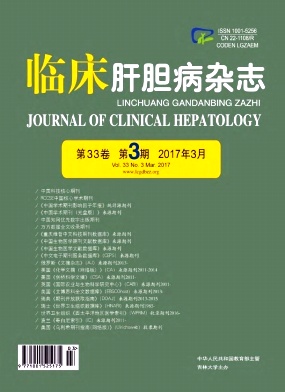Objective To investigate the immunohistochemical expression of glucose transporter 2 (GLUT2) in patients with hepatogenous diabetes and its significance.Methods A total of 40 liver tissue samples were collected from patients who were treated in Department of Severe Liver Disease and Department of Hepatobiliary Surgery in Beijing You An Hospital, Capital Medical University, from June 2012 to July 2014.Immunohistochemistry was used to measure the expression of GLUT2 in liver tissue in all four groups (normal group, chronic hepatitis B group, liver cirrhosis group, and hepatogenous diabetes group) .A one-way analysis of variance was used for the comparison of continuous data between groups, and the least significant difference t-test was used for further comparison between any two groups;the Fisher's exact test was used for the comparison of categorical data between groups.Results There were significant differences in fasting blood glucose, glycosylated hemoglobin, glycosylated serum albumin, body mass index, and proportion of liver tissue with steatosis between the hepatogenous diabetes group and the other three groups (all P<0.05) .Immunohistochemistry showed that GLUT2 was mainly expressed in the liver cell membrane, especially the cell membrane near the sinus cavity.In the patients with normal liver tissue, chronic hepatitis B, or liver cirrhosis, the expression of GLUT2 in liver tissue tended to gradually decrease from the central vein to the portal area, and one patient with liver cirrhosis had enhanced expression of GLUT2 in the regenerative nodules of hepatocytes.In the 10 patients with hepatogenous diabetes, 6 had significant steatosis of the liver tissue and strongly positive and relatively even expression of GLUT2 at the site of steatosis, as well as the cytoplasm around steatotic hepatocytes, with no significant difference from the expression of GLUT2 in the sinus cavity.Conclusion Patients with hepatogenous diabetes tend to have steatosis in the liver tissue and a significant increase in the expression of GLUT2, which may be the pathogenesis of abnormal glucose metabolism.














 DownLoad:
DownLoad: